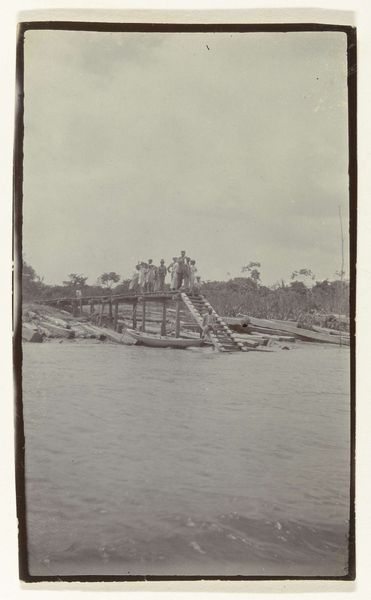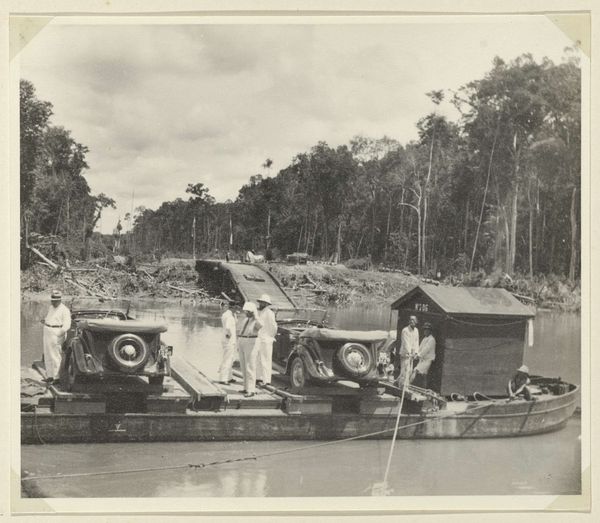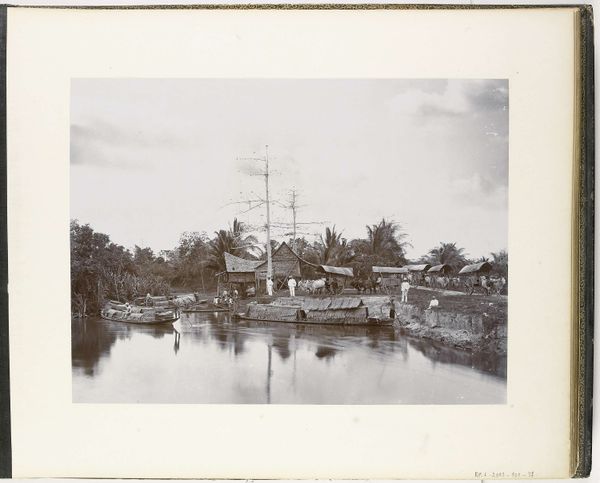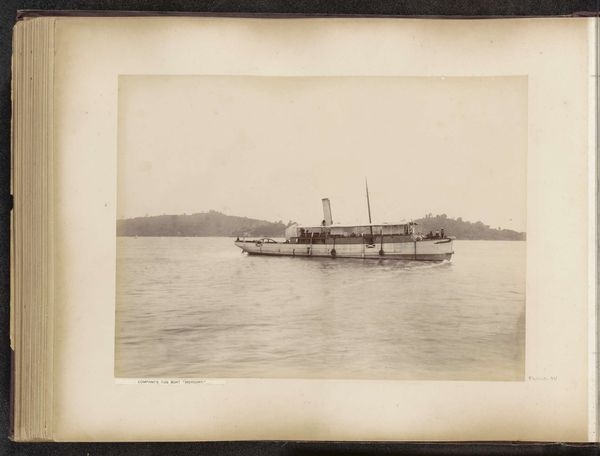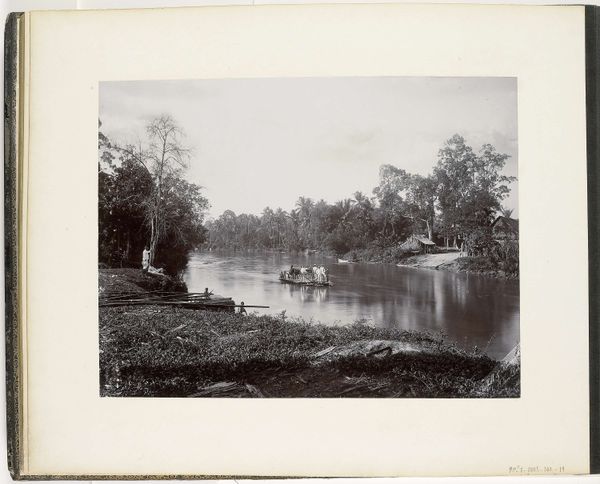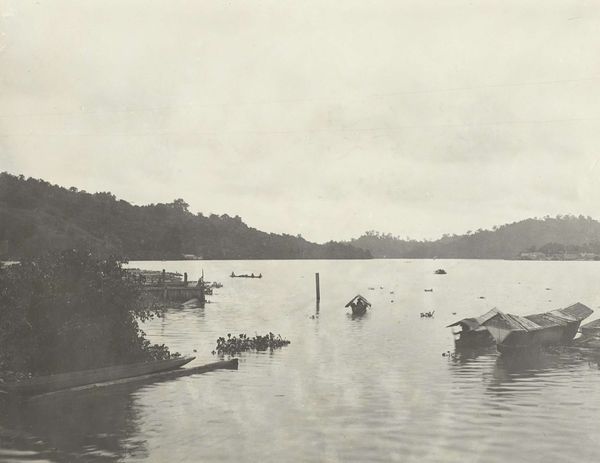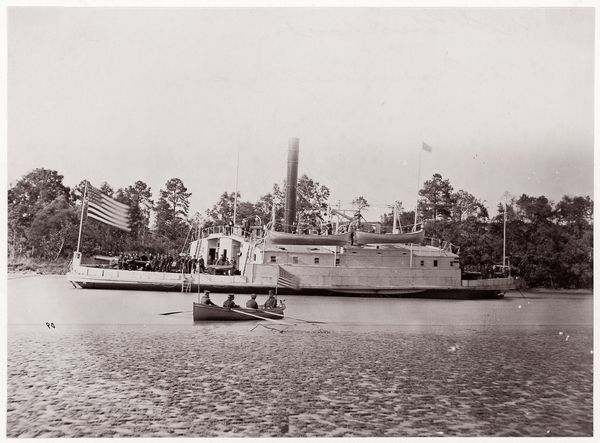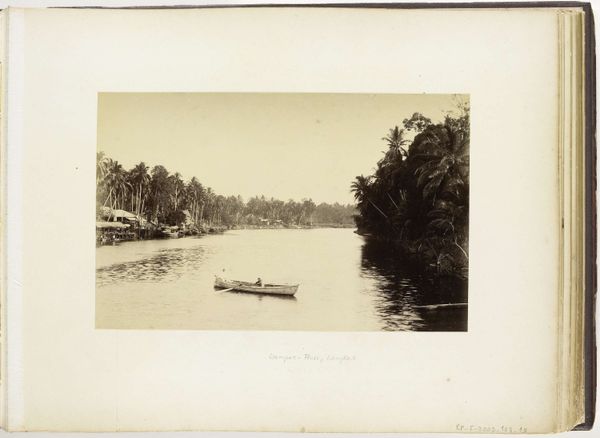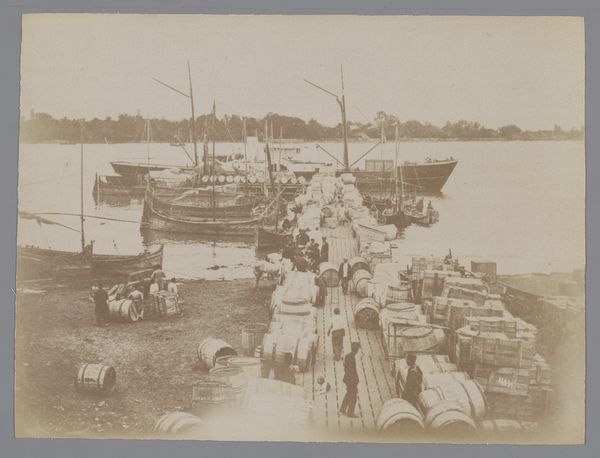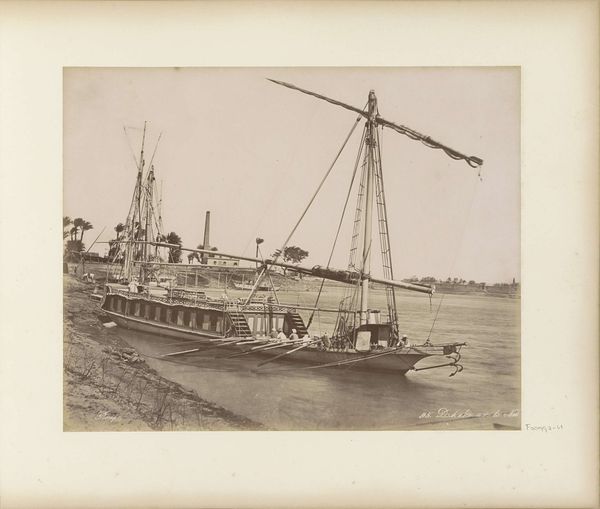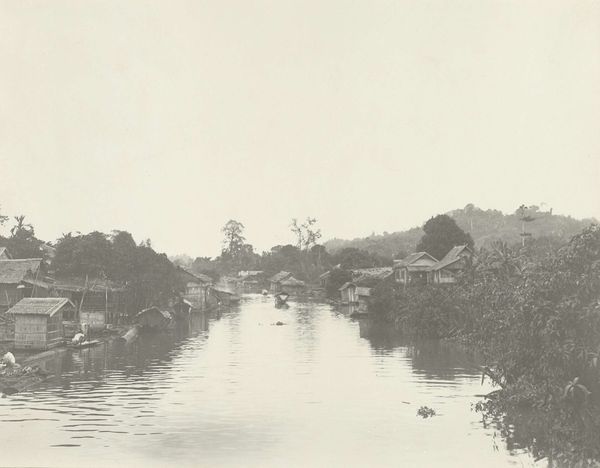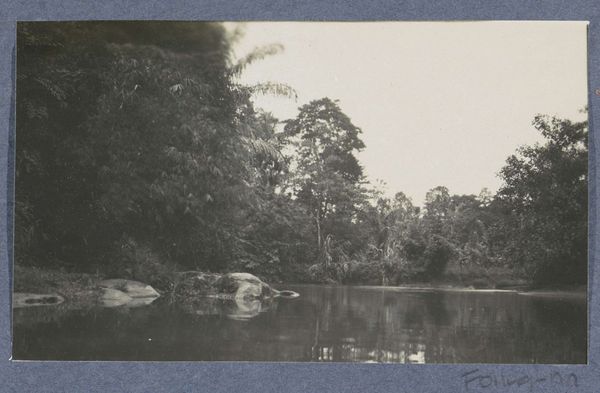
photography, gelatin-silver-print
#
landscape
#
photography
#
gelatin-silver-print
#
realism
Dimensions: height 110 mm, width 130 mm
Copyright: Rijks Museum: Open Domain
Editor: So, this is "Overzetten van drie auto's op een veerboot," possibly from 1935, a gelatin-silver print by an anonymous artist. I find the layering of modes of transportation—the cars, the ferry, and the suggestion of the river—quite compelling. What do you see in it? Curator: Well, let’s think about what's being represented here. We see the material realities of transport and transition, both of which are fundamentally social processes. How were these cars manufactured? Where were they headed, and who could afford such transit during the period? These vehicles crossing water embody shifts in access and the consumption of resources that powered these modes. Editor: That's interesting! It hadn't occurred to me to think about the economics involved. I was just focusing on the composition. Do you think the photographic medium itself plays a role here? Curator: Absolutely. Gelatin-silver prints like this one were becoming increasingly common. This choice provided broader accessibility for capturing and disseminating imagery related to leisure or trade during the early to mid-20th century. The reproducible nature of the photograph democratized images, moving away from singular painted representations. Consider how the image challenges traditional distinctions between art and documentation. Editor: So, it's not just about what’s *in* the picture, but how the picture *itself* was made and distributed? Curator: Precisely. We examine the entire circuit of production and reception, from the raw materials to the viewer’s encounter. We must look at these forms to ask questions about labor, materials, and consumption. Editor: That really changes how I see the photograph. It is not just a slice of life but also part of a larger economic and social network. Curator: Indeed, by emphasizing material circumstances, the meaning and function are reframed, illuminating unseen layers of history embedded within the work. Editor: Thank you. Now I have more things to think about concerning materiality, manufacturing, and dissemination of artwork!
Comments
No comments
Be the first to comment and join the conversation on the ultimate creative platform.
